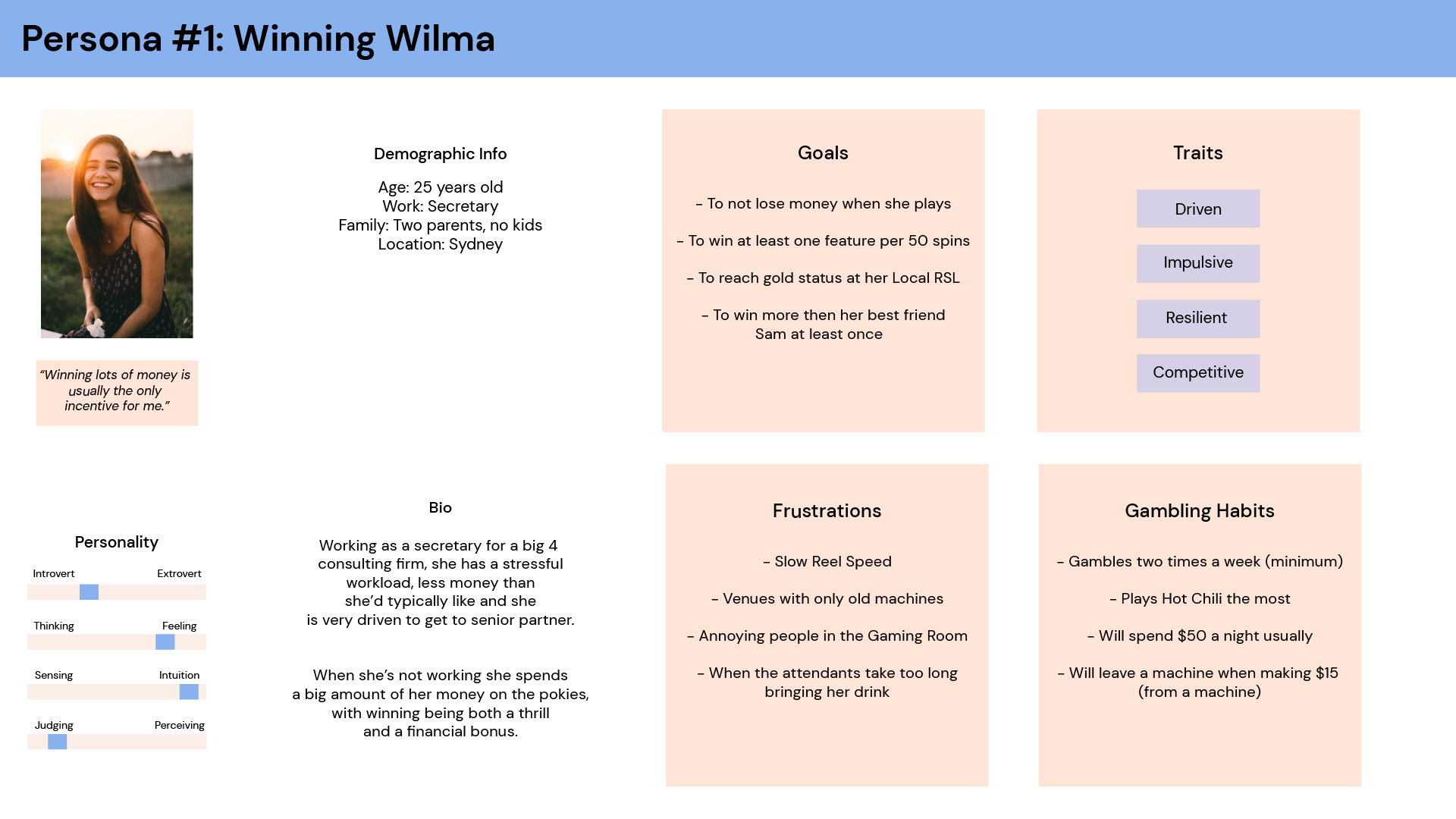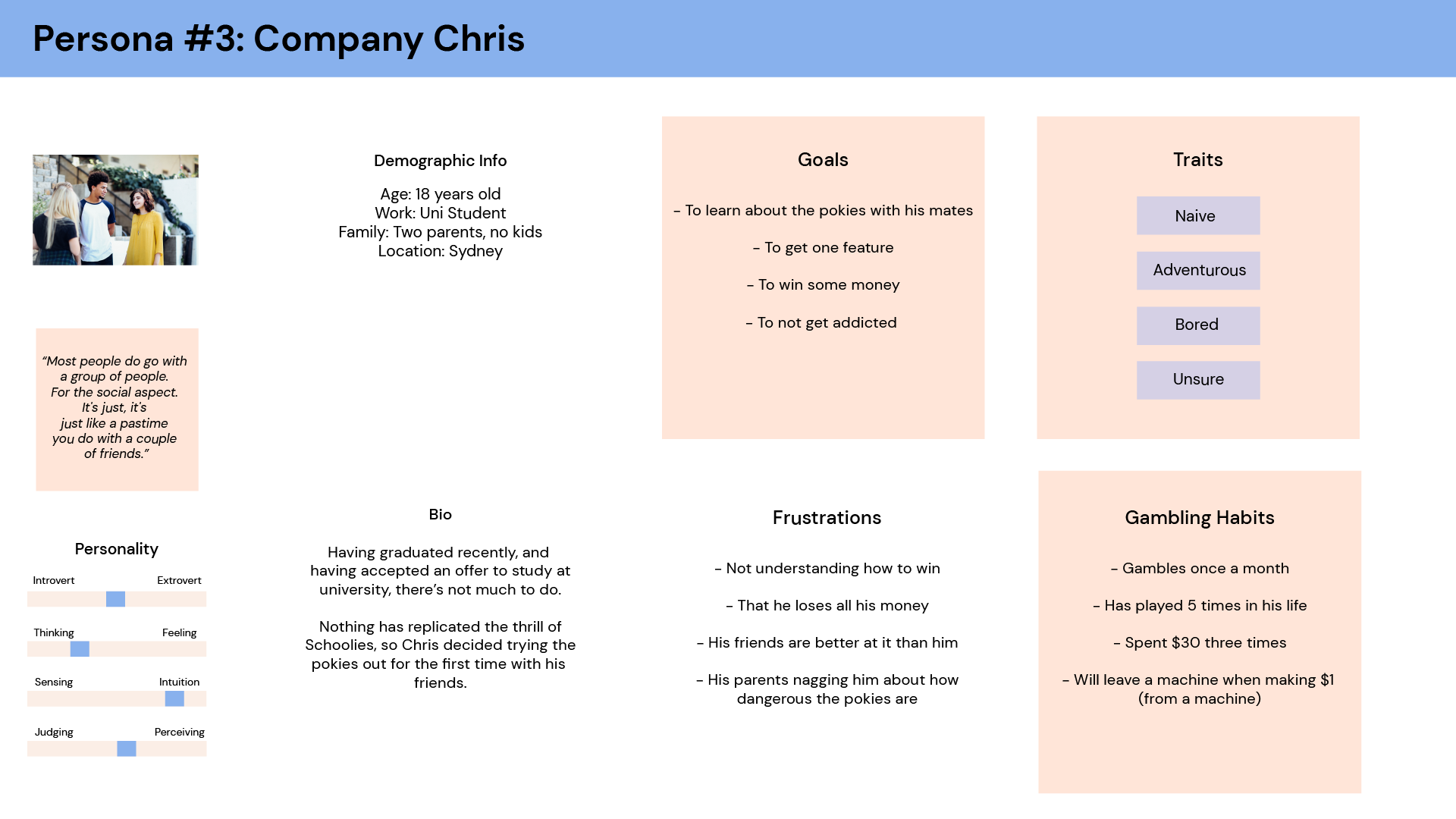Project Overview
Time Frame: 13 Weeks
Team Members: Eden Gorton, Harrison Khannah
Tools: Adobe Illustrator, Sketch, Figma, Adobe Premiere, Trello, Miro
My Role
Various exploratory user research methods
Throughout the duration of the project, we as a group engaged with a variety of research methods to find a worthwhile problem to address (among a wide range of problem areas), and investigate how to solve it. We used our reserach to 'reframe the problem'.
Rapid Prototyping/Ideation
As a group, we rapidly created potential solutions with methods such as design by metaphors.
UX Design/Film Creation
I was responsible for the creation of a variety of assets, such as one of the user journey maps, as well as the directing and creating of both the promotional and click through videos. I also was responsible for the animations in our user interface.
Please note that this is a topic in which we conducted extensive research, and has been summarised for this page. For a more detailed look at our research, please contact me!
Project Background
Gambling is a very addicting activity, resulting in compulsive engagement for some gamblers. We investigated how & why slot machines are so addictive. We found that slot machines account for over $14 billion dollars in gambler losses, 62% of total gambling revenue. Gambling mechanisms are ubiquitous in Australia, with one slot machine per 114 people. Similarly, responsible gambling measures are "unconcerned with preventing harm". Currently, Australia is number one in the world for the highest capita of problem gamblers, with uncontrollable gambling addiction affecting approximately 200,000 Australians.
We limited ourselves to addressing Electronic Gambling Machines (EGMs), otherwise known as slot machines. We also ruled out addressing the slot machines present in casinos, due to the different experiences for users requiring different strategies to address them (as they're in a different venue).



Research Plan
As a group we divided what we wanted to research into 3 different categories: Structural Characteristics (researched by me), Venue Characteristics (researched by Harrison), Psychological Characteristics (researched by Eden).
To gain a more complete understanding over the problem space, we each designed a research approaches and created three streams, with each of us interviewing a different range of stakeholders, providing different perspectives. I investigated Structural Characteristics with the following methods (For more depth, please see 'Transcription of Report 1', in the DropBox link at the bottom of this paragraph):
Step 1 - Mind-mapping
Step 2 - Literature Review/Secondary Research
Step 3 - Contextual Observation & Think-Aloud
Step 4 - Interviews & Questionnaires
Each step of the research process was focused on answering the following questions:
Can people distinguish why a machine is better than another?
Does the presence of a specific machine feature encourage gambling?
Are gamblers aware of some of the techniques used by EGM manufacturers to reel them in?
Do gambling machine users have any strong opinions about changes needed for machines?
Do EGM users feel that there are other factors which more strongly influence why they gamble?
By answering these questions, I gained a better understanding of how structural characteristics influence the operation of an EGM, and whether or not they contribute to addiction. After my literature reviews, I observed and interviewed a range of participants, from a wide range of different ages and lifestyles.
Research Analysis
Concluding this research process, we as a group took our findings and each created an affinity diagram, so we could group like insights into themes, and create a series of personas. We then storyboarded what a typical interaction with the slot machines would be like for each of our personas.
Each persona represents one of the themes featured in our affinity diagram. In this case, the creation of personas was to isolate individual specific needs for my participants. As stated earlier, my participants wanted to win, to have fun, to have good company, and to have implements to help them stop.








Reframing the problem
Following this process, we reflected on what we'd found and 'reframed' our problem, what if we could try to not remove fun, but give the users context in the same way an arcade does? The arcade is an example of an institution that doesn't provide the users with financial gain, however the provision of information in context while playing the game of how much money they're spending helps users stop, if need be.
Measuring Success
Having completed our research, our group reconvened to share our insights, and after our collaboration we learned that navigating this problem space is complex. There are a range of stakeholders involved legally, and some of the only feasible ways to help those addicted, is to operate through their consumer's own devices, rather than changing the venue.
We as a group developed a bespoke set of heuristics to measure the effectiveness of our solution.


Rapid Ideation
As a group we conducted Brainwriting 6-3-5's to rapidly ideate with as many possible ideas to address one or more of the criteria defined earlier. This lead to approximately 30 different concepts. We then analysed our ideas by comparing them against our criteria for success, and made note of which adhered to the most criteria items effectively.
This left us with three strong concepts: Altfun, The involve system & The Comm-it. Each of these proposed concepts had their own positives and drawbacks, addressing the criteria each in different ways.
To select the best concept out of the three, we created user journey maps to depict how our personas would incorporate to these concepts in their daily lives. After this, we found the Comm-it to be the most effective, and when modified, could involve aspects from the other two solutions.
(User journey maps in link below)
The birth of the Comm-it
The development of the Comm-it concept means that we address legal and human rights issues that other concepts had. It tackled all of our criteria effectively, creating a viable concept that could be developed and tested.
A precondition is that users 'have to want help' - or they will manipulate others to achieve their goals. We developed two pereceived use-cases for this solution. For one of the use cases, there must be a trusted family member who is willing to help the 'problem gambler'. We made our 'problem gambler' Sam and our 'trusted family member' Sammy.



Methodology of our Development
To develop the Comm-it, we followed a process of iteration and continuous development of our idea. We had 14 different participants involved with the testing at one or more iterations of development.
We used a combination of usability testing & think-alouds as well as roleplaying among our various test participants. After our usability tests, we conducted post-testing surveys, to see how our users found this process.The aim of mixed usability testing was to test our conceptual model against our user’s mental model, to understand if our design principle implementation was successful and where the core errors were. We implemented role-play to understand the usability in conjunction with conceptual application and think aloud to find out why the users are having issues. It was also an effective tool to test both phone and wearable as one user can't utilise both in our second use-case.
We also used co-creation and heuristic evaluations from our second iteration of testing onwards. We involved our participants in the design process as we found they had unique and compelling ideas on how to develop a system with no precedent such as this one. Our participants helped us develop use-case 2, and also create use-case 3 during iteration 2.


Iteration 1
In iteration 1, we created paper prototypes and sketched for our two applications (mobile and wearable and created task-based activities for our usability testing and informing future iterations. We uploaded our sketches into the digital application, POP to allow users to experience the prototype on the device it was intended.
Iteration 1 - Phone application sketches
Iteration 1 - Wearable application sketches
Iteration 2
In iteration 2, we developmed mid-fidelity prototypes and developed a 'new use-case 3', to allow for users to precommit how much money they want to spend before spending. During this iteration, we introduced our heuristic evaluation alongside the co-creation process.
Iteration 2 - Phone application prototype
Iteration 2 - 'Family mode' wearable prototype
Iteration 2 - 'Self-regulation mode' wearable prototype
Iteration 3
Iteration 3 was concerned with creating the UI elements, and developing an aesthetic, such that many of the issues found with earlier prototypes (most importantly readability), could be addressed. We created our tool tips, cards, and input sliders in this iteration to increase the ease of use.
Iteration 3 - Navigation options


Iteration 3 - Design Choices



A video detailing the navigation process in our final application.
How the Comm-it works
The Comm-it is a device that encourages the user to set their own barriers and deter themselves from problem spending. It also allows for a trusted family member to be involved in this process.
The Comm-it's aim was never to eradicate the gambling problem in Australia, but to help williing individual's with their problem gambling. It encourages family communication, and provides self-help methods, for gamblers who want help. It provides a visual on income lost, rather than income 'won'. It gives the user goals and aspirations, to catalyse their change management process. The Comm-it continuously encourages the user to spend less by displaying their losses and time spent.
The development of this product has not only has ensured improved usability and user satisfaction throughout our design iterations, but has made us continuously more aware of our users’ internal conflict. These conflicts inform the co-design process, allowing the concept of the Comm-it to develop alongside the user.
Therefore, the Comm-it was once simply an app for commiting to reduced spending, now it's about helping you commit to your own pre-determined limit with optional your family assistance. By providing user's choice and displaying consequences, we educate our users not only on the ramifications of problem spending for loved ones, but more importantly: yourself.
The Comm-it's aim was never to eradicate the gambling problem in Australia, but to help williing individual's with their problem gambling. It encourages family communication, and provides self-help methods, for gamblers who want help. It provides a visual on income lost, rather than income 'won'. It gives the user goals and aspirations, to catalyse their change management process. The Comm-it continuously encourages the user to spend less by displaying their losses and time spent.
The development of this product has not only has ensured improved usability and user satisfaction throughout our design iterations, but has made us continuously more aware of our users’ internal conflict. These conflicts inform the co-design process, allowing the concept of the Comm-it to develop alongside the user.
Therefore, the Comm-it was once simply an app for commiting to reduced spending, now it's about helping you commit to your own pre-determined limit with optional your family assistance. By providing user's choice and displaying consequences, we educate our users not only on the ramifications of problem spending for loved ones, but more importantly: yourself.
The use of the Comm-it in real life.